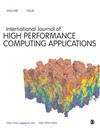预测SARS-CoV-2抑制剂的语言模型
IF 2.5
3区 计算机科学
Q2 COMPUTER SCIENCE, HARDWARE & ARCHITECTURE
International Journal of High Performance Computing Applications
Pub Date : 2021-12-14
DOI:10.1101/2021.12.10.471928
引用次数: 12
摘要
COVID-19大流行凸显了对计算工具的需求,以自动化和加速针对新型蛋白质靶点的药物设计。我们利用深度学习语言模型根据预测的蛋白质结合亲和力生成和评分候选药物。我们在约96亿个分子上预训练了一个深度学习语言模型(BERT),并在混合精度下实现了603 petaflops的峰值性能。与之前使用这种架构的工作相比,我们的工作将预训练时间从几天减少到几个小时,同时还将数据集大小增加了近一个数量级。为了评分,我们使用数千个具有结合亲和力数据的蛋白质靶点集合对语言模型进行了精细调整,并寻找特定蛋白质靶点SARS-CoV-2 Mpro和PLpro的抑制剂。我们利用遗传算法的方法来寻找使用语言模型的生成和评分能力的最佳候选人。我们可推广的模型加速了新兴治疗靶点抑制剂的识别。本文章由计算机程序翻译,如有差异,请以英文原文为准。
Language models for the prediction of SARS-CoV-2 inhibitors
The COVID-19 pandemic highlights the need for computational tools to automate and accelerate drug design for novel protein targets. We leverage deep learning language models to generate and score drug candidates based on predicted protein binding affinity. We pre-trained a deep learning language model (BERT) on ∼9.6 billion molecules and achieved peak performance of 603 petaflops in mixed precision. Our work reduces pre-training time from days to hours, compared to previous efforts with this architecture, while also increasing the dataset size by nearly an order of magnitude. For scoring, we fine-tuned the language model using an assembled set of thousands of protein targets with binding affinity data and searched for inhibitors of specific protein targets, SARS-CoV-2 Mpro and PLpro. We utilized a genetic algorithm approach for finding optimal candidates using the generation and scoring capabilities of the language model. Our generalizable models accelerate the identification of inhibitors for emerging therapeutic targets.
求助全文
通过发布文献求助,成功后即可免费获取论文全文。
去求助
来源期刊
CiteScore
6.10
自引率
6.50%
发文量
32
审稿时长
>12 weeks
期刊介绍:
With ever increasing pressure for health services in all countries to meet rising demands, improve their quality and efficiency, and to be more accountable; the need for rigorous research and policy analysis has never been greater. The Journal of Health Services Research & Policy presents the latest scientific research, insightful overviews and reflections on underlying issues, and innovative, thought provoking contributions from leading academics and policy-makers. It provides ideas and hope for solving dilemmas that confront all countries.

 求助内容:
求助内容: 应助结果提醒方式:
应助结果提醒方式:


